The Australian Shepherd and the Blue Heeler are two hardworking and beautiful dogs. Together they make some seriously cute designer puppies! The Australian Shepherd Blue Heeler mix is commonly referred to as the Australian Heeler. You may also hear them referred to as the Texas Heeler or the Queensland Heeler Australian Shepherd mix.
Whatever you might call him, the Australian Heeler is an energetic and work-oriented dog who ideally needs to be placed with a family who will work them on a ranch, or an active family who can exercise him for at least 60 to 90 minutes every day without fail.
Exercise is the main stipulation if you want to welcome an Australian Heeler into your home. With so many other aspects that you need to be aware of before you invite him into your home, you need to learn more about this amazing pup. So, without further ado, let’s take a closer look at this friendly mix.
Parent Breeds
When thinking about inviting a designer dog into your life it is important to research both parents. Ideally, you’ll have a good idea as to what characteristics your pup will inherit. Here we will look at both the Australian Shepherd and Blue Heeler’s history, personality, and size. This will help you get a better understanding of both parents and what you can expect when owning one.
Australian Shepherd
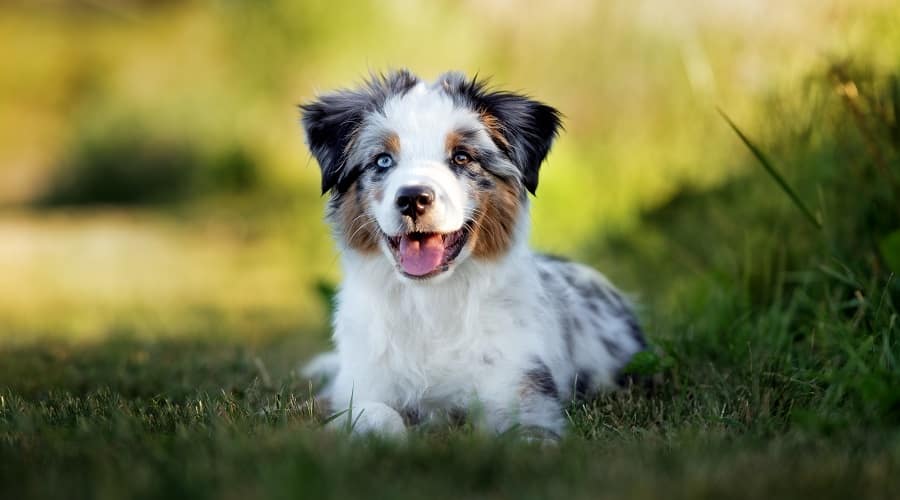
In 2020, the American Kennel Club (AKC) has ranked the Aussie as the 17th most popular dog in America. This cowboy companion stands between 18 and 23 inches tall. They also weigh a sturdy 45 to 60 pounds. This pup will be a medium-sized dog.
Ironically, the Australian Shepherd does not actually come from Australia. Instead, this mix is the creation of traveling farmers and ranchers who passed through Australia. His breed standard was finalized in North America and was bred to be used as a herding dog.
The breed is described as smart, work-oriented, and exuberant. Combining this with his high energy makes for an intense dog. This pup should not be taken on if you aren’t seeking a canine shadow. Because of his affectionate nature, the Australian Shepherd is often chosen as a parent breed for many Aussie mixed breed dogs. Some of the more popular mixes include the Aussiedor, the Aussiedoodle mix, or the Siberian Husky Aussie mix.
Blue Heeler

The Blue Heeler is not this breed’s real name. It’s the nickname commonly used for the Australian Cattle Dog. In 2020, the AKC ranked the Blue Heeler as the 55th most popular dog breed in America. They are described as alert, curious, and pleasant.
The Blue Heeler measures between 17 and 20 inches. From paw to shoulder, this dog weighs somewhere between 35 to 50 pounds. They have dense coats that are short to medium in length, but easy to care for. While he is not technically blue in color, he will have black, gray, and white patches. This often gives him a blue appearance compared to his red sibling.
The Blue Heeler, unlike the Australian Shepherd, does originate from Australia. A local man imported Scottish Collies and the Smithfield dog, and bred them with his domesticated dingoes. Other dogs such as Dalmatians, Black and Tan Kelpies, and Bull Terriers were thrown into the mix. As a result, the Australian Cattle Dog was born. Thanks to the Collie gene, he too is a fantastic herder, as well as being loyal and protective. They are also popular as a parent to other Blue Heeler mixes, and a notable one is the Labraheeler.
Aussie Blue Heeler Mix

Whether you love or hate the idea of designer dogs, they are becoming increasingly popular. This mix is no exception. The Australian Heeler is the combination of two equally striking herding dogs, but ones that are slightly different from one another. Below is what you can expect from a typical Australian Heeler.
Temperament

The Australian Heeler is naturally going to be a fantastic herder. If you are seeking a herding dog that is different from your neighbor’s dogs, then look no further! He will have the stamina of an athlete, and you could work him for as long as need. This pup will do it all with a smile on its face! One of the hardest workers you’ll ever employ, and you’ll only have to pay him in treats and belly scratches. Just be warned that he may try to herd strangers, small children, or other pets. If this happens, then this behavior will need to be discouraged immediately.
The Australian Heeler is a loyal and loving dog. You can be sure that he will stick to you like glue and shower you in doggy kisses. He will love every member of the family, be that granny or grandchild. Once he’s expelled all energy he will happily snuggle up on the sofa.
He will be aloof with strangers, with a natural suspicion from the Heeler parent. If this pup feels their family is in danger, they will step in harm’s way to defend them. Once this pup has assessed the situation and deemed it safe, it’s perfectly fine for guests to pay them some attention. It is unlikely that he will be super sociable with strangers, just mildly so. Some people may prefer this over a jumpy and needy pooch.
Following on from this, he also makes a great watchdog. This pup will alert you to things that aren’t quite right. This is great if having a watchdog is part of your canine checklist, not so much if you have sensitive neighbors or noise level restrictions.
Size & Appearance

The Australian Heeler will measure between 18 and 22 inches tall, from paw to shoulder. They will weigh anywhere between 40 and 55 pounds. Both parents are similar in size, with the Blue Heeler being slightly smaller. Whichever parent he takes after more you can be certain of a medium-sized dog.
Unlike some designer dogs who inherit a certain shape from a particular parent, the Australian Heeler is usually a 50/50 split when it comes to appearance. He will have large ears that could stand erect or flop down, and round eyes that could be dark in color, bright blue, or a mixture of both.
Coat & Colors

The Australian Heeler’s coat is undoubtedly their most distinctive feature. Like both parents, their coat will be patchy, spotty, and speckled. Because one parent is a Blue Heeler, rather than the Red Heeler, it is likely that their coat will be black, white, and gray in color rather than reds or browns. However, their parents may carry the red and brown colored genes, so these colors may pop up, albeit in smaller amounts.
He will have a double coat that will keep him warm on the ranches, and it is likely to be denser like the Cattle Dog’s coat but shorter than the Australian Shepherds. Because it is shorter than the Shepherds coat, less grooming will be required, which we will cover further down in this guide.
Exercise & Living Conditions

As we have already covered, the Australian Heeler will need between 60 and 90 minutes of intense exercise every day to keep their mind happy and body healthy. If you cannot commit to this high level of activity, then you need to consider a different pooch altogether.
Being an intelligent dog who loves nothing more than a job or a challenge, he will need a variety of exercise activities and brain games. If he becomes restless, he will most certainly chew up your furniture, so it would be wise to commit to exercising your pup for everyone’s sanity!
The Australian Heeler, having double working and herding parentage, would do better in a medium to large-sized home. This pup will need access to ample outdoor space. Ensure that this space is reinforced, otherwise, he might escape and find cattle to herd, but the fresh air will please the Australian Heeler like nothing else.
The Australian Heeler will be suited to a home with young children and other household pets, just as long as he doesn’t display herding tendencies. This is heavily influenced by proper socialization and training, but with this, he will be an affectionate and gentle dog who wants to please every member of the family.
Training

The Australian Heeler will need to be socialized with other dogs, animals, and unfamiliar humans so that he grows into a confident and well-mannered pooch. This will also ensure that he does not become too overprotective. Be sure to make all of his training a pleasant experience, and utilize positive reinforcement training.
If you find that he is herding inside of the home then you need to ensure you discourage behavior with these steps. Because these pups are extremely intelligent, then you’ll hopefully find that they pick up their training quickly. If not, just be persistent and consistent with it and you will soon see results.
Health
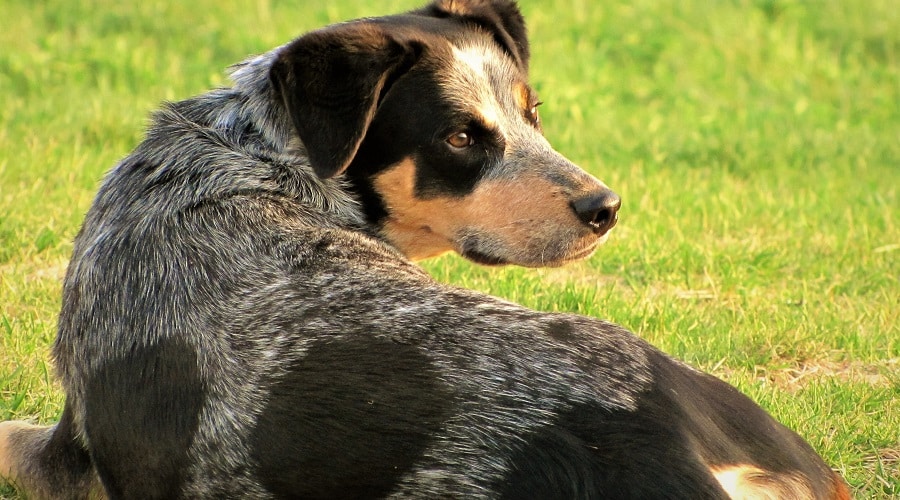
The Australian Heeler enjoys a lifespan of 12 to 16 years, and he is a relatively healthy dog. Inheriting genes from two different dog breeds, he is susceptible to health concerns from both sides, so let’s take a closer look at what he might inherit:
Hip and Elbow Dysplasia: Both parents are prone to Hip Dysplasia, and the Cattle Dog is also prone to Elbow Dysplasia. While this is a common condition in many dogs, it can eventually lead to pain and paralysis in later life through wear and tear of the affected joints.
Ophthalmologist Evaluation: Both parents suffer from a variety of eye concerns, such as Progressive Retinal Atrophy, Collie Eye, and Primary Lens Luxation to name just a few, and general eye health will deteriorate over time.
Deafness: There is a chance that he may inherit deafness, which may be bilateral or unilateral, from the Cattle Dog parent. This is tested by a BAER test, and any dog suffering from deafness should not be bred from.
Nutrition

The Australian Heeler should be fed a high-quality kibble that will keep him energized throughout the day, and it should be protein, energy, and calorie-rich. This is particularly true if he is a working dog. Kibbles designed for working dogs have the optimum levels of protein to fats, to keep their body energized and muscles strong and healthy.
A typical Australian Heeler will need around 2 ½ cups of kibble every day, dependent on their energy levels. Aussies can be notoriously picky eaters, so make sure to choose a food that’s suitable for pups that may be a little choosy about what they eat.
Grooming

The Australian Heeler will likely develop a short to medium-length coat that will need less grooming than their Australian Shepherd parent, but slightly more than the Australian Cattle Dog. You’ll be looking at 2 to 3 brushing sessions every week. This will keep your dog looking healthy, and remove the dirt their coats pick up in the dusty ranches.
This pup’s large ears will need cleaning every week as they will also pick up a lot of dirt while at work, and a bath every 6 to 8 weeks will keep him feeling fresh. Be sure to monitor the condition of both eyes as they can suffer from eye illnesses. If in any doubt about their health be sure to visit your Veterinarian.
Puppy Price
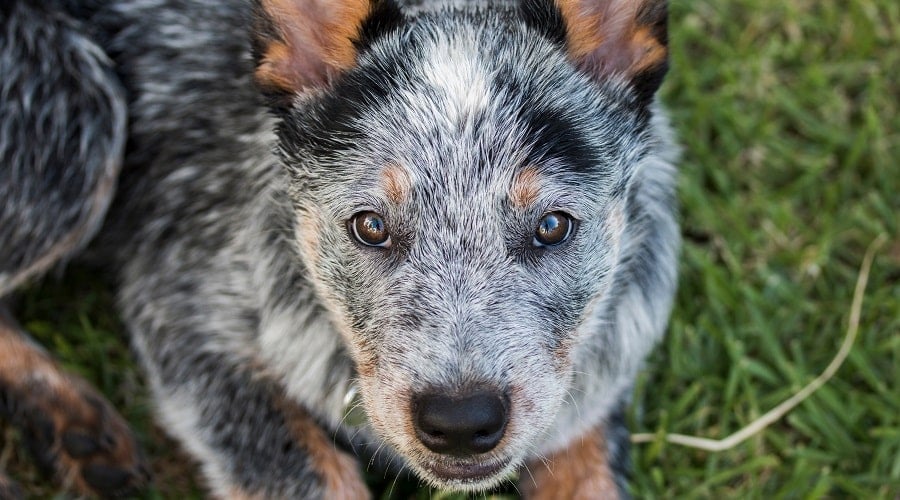
The starting price of an Australian Heeler will start from around $800, increasing in price depending on lineage and appearance, with different color eyes commanding a higher price.
Be sure to work with reputable breeders, and if you find an Australian Heeler that is being sold for much less or much more than this price, then this should be a warning sign that something is not right with the breeder.
As Family Pets
- The Australian Heeler is full of working energy and intelligence.
- This breed should be placed with a family that is seriously active.
- You should exercise this breed for a minimum of 60 minutes each day.
- They are protective dogs, who always ensure the safety of their families.
- They are aloof at first but will be fine once socially acclimated.
- This breed will naturally herd because both parents are herders.
- Socialization is an important part of training.
- Without proper socialization, this pup may be wary of strangers.
- He needs space both inside and outside of the home.
- This breed gets on well with children and other household pets.
- Their coats need brushing several times a week.
Finding a Breeder

In order to find an Australian Heeler, you need to get your detective hat on. This pup is rarer than most designer dogs, and you will also need to track down a breeder that is reputable and can show that their parents are a Blue Heeler and not a Red Heeler.
Be sure to meet them and their dogs in person, ask to see the dog’s health certificates, ask for social media pages or check them out online to find reviews from other customers.
Rescue & Shelters

If you are thinking about rescuing an Australian Heeler then be sure to check out these dedicated breed rescue websites, as they also look after breed mixes, and this is where your highest chance of finding one of these beautiful pups lies.
The Australian Cattle Dog Rescue website, along with the Australian Shepherd Rescue website, lists adoptable dogs state by state and usually the contact details for rescue representatives too, so good luck!
Final Thoughts
The Australian Heeler is a beautiful herding dog who deserves the very best, and we hope that after reading this guide you understand that he needs to be exercised thoroughly in order to be healthy and happy.
If this is something that you can offer him, then your newfound canine relationship will be one of the most rewarding ones you can find, so what are you waiting for?!

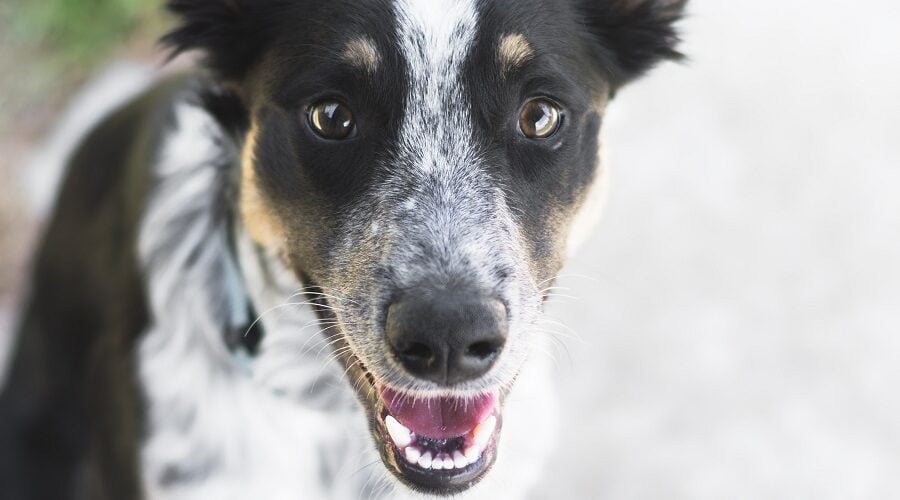

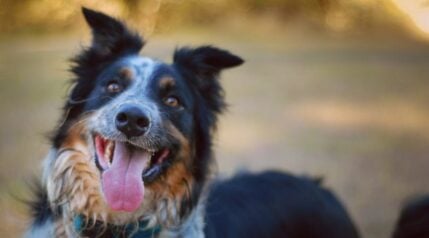


Love are Auzy Bear mix ! 50% Australian in 50% healer. wish I could share a picture of him. He’s so beautiful. !
Looking for a stud for breeding
I have a Texas heeler that turned a year old January 20 she fits your description to a T she does great working our horses and love’s to ride in the truck also a great companion fory wife …… Thanks for the information
Best breed I ever had..
He is the most affectionate, loyal and intelligent dog I ever had…
My Australian Cattle dog’s name is Smokey..
He’s 8 years old and my best friend..
I would be lost without him..
Thanks for all the great info! My daughter gave me my almost 2 year old Australian Heeler when she was 3 months. She is the smartest kindest dog. I am so grateful to have her. I can’t say enough. I am 67 years old and fit. So I am out either playing with her or walking 3 to 4 miles a day. This definitely keeps her happy. I have consistently done most if not all the right stuff. I say this to say…if you are consistent, you will have just the nicest breed!
Good morning, I have a 5-month-old tricolor female heeler pup. I’m just wondering at what age can I let her breed?
Typically, responsible breeding happens after the female dog’s first heat cycle and/or after 18 months old. Here is the AKC’s Guide to Responsible Dog Breeding for more information.
My son gave me his Aussie Heeler when he was 7 months old. He is very stuck to me and cries if I’m gone for too long although he’s already going on two yrs old. Is this normal? Also, he is very jealous when other dogs come up to me to pet them. He tries to fight them. Is this also normal???
He’s the best dog ever and I love him greatly. Charlie Brown is his name. Thanks for the feedback!
Hi Olivia! Your pup clearly sees you as a resource that he has to guard. You see this happen with dogs and their food. They feel that you need to be guarded or protected, and do what they need to let other dogs know that you are “their” resource, and not to be shared. You’ll need to start socializing very slowly so that other dogs are not at risk of harm. I’d also recommend getting in-person instruction locally if you can afford to do so. To answer your question, it’s not “normal” but it’s definitely “common” behavior in dogs with something they value. Good luck with your pup!
I wish I could post a pic but have a red heeler Aussie shepherd mix (half and half we think, the heeler mom may have had a tiny bit of lab in her too). He’s only 4 months now but we’re wondering what kind of adult coat length/fluffiness to expect.
He’s tricolored with a couple of spots or freckles on his nose that have appeared since his adoption. So we think he looks more like an Aussie due to coloring but will his coat stay short like this puppy coat? It’s not wiry like other heelers.
Hi Erin! It’s hard to say, but I can tell you if your pup has more Aussie in them, they are very likely to stay fluffy. Dogs don’t shed their puppy coats until around a year when their fur starts to mature along with their bodies. Generally speaking though, it will depend on which side of the breed mix your pup inherits the most. Good luck with your pup!
Hello! This was a great and thorough article. I own a 35lbs, 6month old Australian Heeler. Though he is only 1/4 Australian Shepherd, we can definitely see that side in his coat. He is currently on Purina Pro Plan and I was thinking of maybe switching food brands when he’s older. What are your thoughts on Taste of The Wild and Orijen dry food?
Hi, Margarita! Thanks for stopping by to comment. I think changing foods as your dog ages is just fine. Just do it slowly so you aren’t dealing with a messy stomach for too long. Both foods are high quality, and we’ve fed our dogs both. Ours seemed to do better with Taste of the Wild, but they are both excellent brands. Good luck with your pup!
Hi, I have a mini-aussie Blue heeler mix. But she is very small considering being mixed with a blue heeler. She is 5 months weighing about 11lbs. We’re not sure if her being so small is her mini Aussie side, but we do think she might be mixed with a different type of dog.
SOunds like a great pup, Melissa! I’d recommend checking out the Embark DNA test if you want a true picture of your pup’s DNA. We’ve done it twice now with good success.
We just adopted what we know now is primarily an Australian heeler (genetic testing done, very fascinating!). She, Izzy, is six months and the first dog our family or I have ever owned. She is the sweetest, smartest, and most kind puppy ever.
She loves on us all day and has the best demeanor. She is very attached and likes to know where I am at all times. Which I don’t mind. And today our vet told us she was nervous when peeing, so I’m not sure if that runs in the family or not.
Hi Karan! Sounds like an amazing pup! Thanks for stopping by to comment and share your experience!
I am getting a 3-4 year old Australian Shepard/ blue heeler mix. I want the best for my dog but i dont make very much money. What is the best food and toys to get him?
Hi Miranda! We’ve tried many different types of food, but I can say that we’ve had a good experience with Purina Pro when balancing both budget and quality. Regarding toys, you really can’t go wrong with anything made by KONG. Good luck with the new addition to your family!
Have a blue Merle Australian heeler and unlike most of the breed, he is that one in a thousand that you don’t have to exercise and is perfectly fine just being a dog around the house all day. He has been trained and is my emotional support animal and the best dog I have ever owned.
He loves people especially children and will play with them for as long as they have energy. He acknowledges everyone he meets and seems to sense when someone needs a lick from a happy dog. People say it looks like he has a smile on his face as he walks towards them.
When playing with other dogs is the only time he is vocal (besides barking when someone knocks at the door) and it sounds like he is upset but it’s all play for him. Years down the line I would get another Australian heeler in a heartbeat, love the breed now.
Sounds like a great dog, Frank! Thanks for stopping by to share your experience with our readers!
I have an 8-week old puppy. I am concerned as she drinks a lot of water and pees a lot. She eats well. Should I be concerned?
Hi Linda! First, I’d say consult with your vet if you are concerned. But generally speaking, no, this isn’t something to be too worried about. We adopted a puppy about a month ago, and she also drank/peed a lot, and she’s finding a normal routine now. Good luck!
I have a black white and tan with the tan spots over the eyes. The litter was a mix of colors, and the breeder was asking different prices for each one. What colors are considered more desirable, and why do you think my tricolor was the least expensive in the group?
Hi Wendy, since this is a mixed breed, the color combinations are usually just preferences. A breeder may charge more if they feel the color combination is more unique looking. I wouldn’t worry much if your tricolor was the least expensive. It’s not like a purebred, where a lower price is offered for a family pet versus a show dog with faults. Thanks for commenting and enjoy your pup!